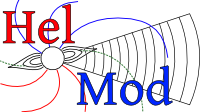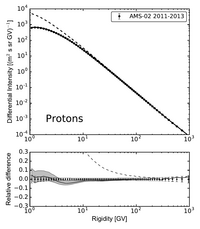HelMod is able to provide a forecast of GCRs intensity. The procedure was presented in Boschini et al 2022. The forecasting is obtained by the averaging number of smoothed sunspot number (SSN), the tilt angle of the neutral sheet, the magnetic field at Earth and Solar Wind velocity on previous solar cycles in which those data are available. The procedure presented follows that from Owens et al 2011, 2012.
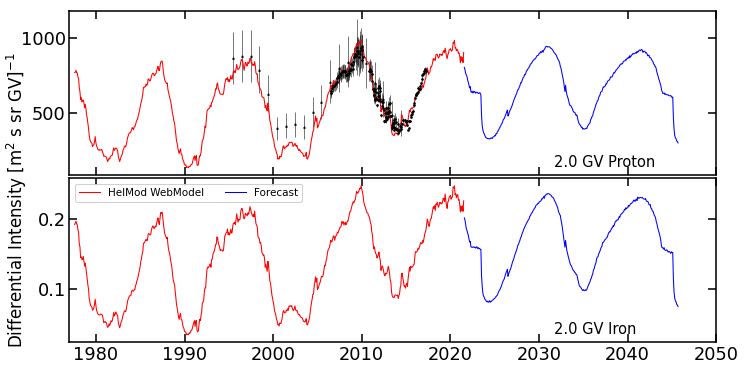
In the above Figure is presented an example of HelMod application in past years (red solid line) compared with measurements from past missions. The blu line represents the average forecasted differential intensity using historical data up to date.
To forecast solar parameters, we consider the previous solar cycles from which those data are available. In fact, the average variation of the used parameters can be obtained along an ideal solar cycle of a fixed average duration.
The prediction of forthcoming years can be further improved using the parameters measured in the latest 3 years, thus obtaining a better approximation on a short term scale. An example of what can be obtained using such a procedure is shown in the following figures regarding the period 2017 to 2021.
The so far described procedure was applied to the tilt angle of the neutral sheet, the magnetic field at Earth and Solar Wind velocity and allowed us to forecast for the next two solar cycles. such forecasting is available using online calculators.
This procedure was successfully applied to past missions data and allowed us to estimate the forecasting accuracy. These results indicate that the forecasting procedure can reproduce HelMod fluences with an accuracy below 5% (\(\pm10\)% at 68% C.L.) for short time predictions (up to 4 years) and below 15% (\(\pm(20-25)\)% at 68% C.L.) for long time predictions (up to 9 years). Including in the analysis datasets during the anomalous solar minima 2009-2010, the average values obtained are marginally affected and exhibit an increase to \(\sim \pm15\)% at the 68% C.L. for 2 years prediction, and to \(\sim \pm40\)% at the 68% C.L. for long time predictions.
The motivation of this effect is that, after the solar minimum, the solar activity shows a fast rise, thus, a small error in the prediction of the end of the solar cycle leads to a huge discrepancy between actual and forecasted solar activity levels.
Bibliography
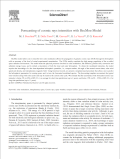 |
Boschini, M.J., Della Torre, S., Gervasi, M., La Vacca, G., Rancoita, P. G. (2022) Forecasting of cosmic rays intensities withHelModModel Advances in Space Research in press, Available online 1 February 2022():, 2022. |
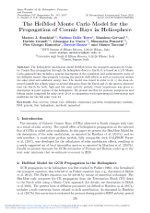 |
Boschini, M.J., Della Torre, S., Gervasi, M., Grandi D., La Vacca, Pensotti S., G., Rancoita, P. G., Rozza D. and Tacconi, M. (2017) The HelMod Monte Carlo Model for the Propagation of Cosmic Rays in Heliosphere Proceedings of the International Astronomical Union, Proceedings of IAU Symposium 335 - Space Weather of the Heliosphere: Processes and Forecasts, July 17-21, 2017, University of Exeter, UK 13(S335):276–279, 2017. |
| Della Torre S. HelMod Forecasting of the Intensities of Ion Cosmic Rays, Oral contribution at SPACEMON – Dec 13-15, 2017 | |
|
Owens, M. J.; Lockwood, M.; Barnard, L.; Davis, C. J. (2011) Solar cycle 24: Implications for energetic particles and long-term space climate change Geophysical Research Letters, Volume 38, Issue 19, CiteID L19106 |
|
| Owens, M. J.; Usoskin, I.; Lockwood, M. (2012) Heliospheric modulation of galactic cosmic rays during grand solar minima: Past and future variations Geophysical Research Letters, Volume 39, Issue 19, CiteID L19102 | |
